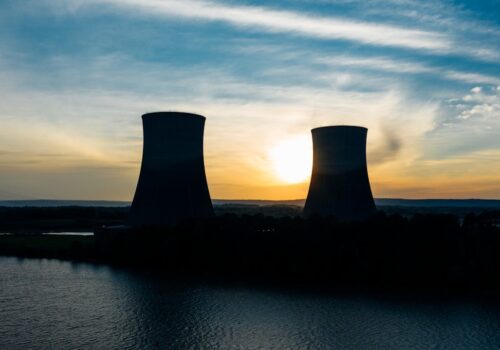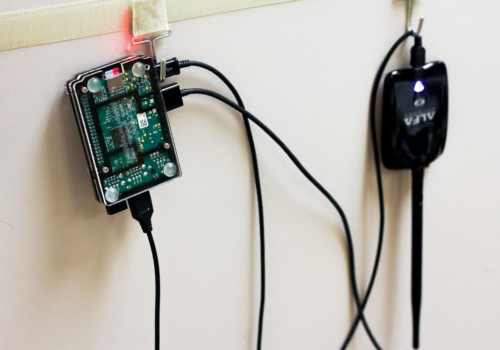WiFi Jammer Integration in Nuclear Energy: A Step Towards Unreachable Defense
In an era where the world’s critical infrastructure faces an ever-evolving array of cyber threats, protecting nuclear energy facilities has become a paramount concern for national security. As the backbone of energy production and research, nuclear facilities are potential targets for malicious cyber intrusions that could have catastrophic consequences. Integrating WiFi jammers in the defense systems of nuclear energy facilities represents a groundbreaking step towards ensuring an unreachable defense against remote cyber threats.
This article explores the rationale behind employing a wifi jammer, its potential benefits, and the ethical considerations surrounding its implementation in safeguarding the integrity of nuclear energy. By harnessing cutting-edge technology, the fusion of WiFi jammers with nuclear energy security offers a robust shield to protect against the increasing sophistication of cyberattacks, paving the way for a more secure and resilient future.
Integration of WiFi Jammers in Nuclear Defense
Integrating WiFi jammers in nuclear defense is a pioneering approach that aims to fortify the security and resilience of critical nuclear energy facilities against potential cyber threats. With the escalating sophistication of cyberattacks targeting critical infrastructure, including nuclear power plants and research facilities, the need for innovative defense measures has never been more urgent. WiFi jammers, traditionally utilized for disrupting wireless communication in various contexts, offer a unique opportunity to bolster the protection of nuclear facilities from remote cyber intrusions.
WiFi jammers, also known as wireless signal blockers or disruptors, emit radio frequency signals on the same frequency bands as WiFi routers and other wireless devices. These emitted signals interfere with and overpower legitimate wireless communications, rendering them ineffective within a certain range. By strategically deploying WiFi jammers in specific areas of a nuclear facility, it becomes possible to create secure zones where unauthorized wireless access and communication are effectively neutralized.
The advantages of integrating WiFi jammers in nuclear defense are multifaceted. First and foremost, they provide an additional layer of protection against cyberattacks that attempt to infiltrate nuclear systems through wireless networks. By disrupting potential communication channels exploited by hackers, WiFi jammers act as a proactive deterrent, discouraging malicious actors from attempting attacks in the first place.
Moreover, WiFi jammers offer a versatile and adaptable defense mechanism. Their deployment can be customized based on the unique security requirements of each nuclear facility, ensuring a tailored and practical approach to mitigating cyber risks. They can be installed discreetly and operated remotely, minimizing any interference with the normal functioning of the facility while maximizing their defensive capabilities.
Despite these benefits, integrating WiFi jammers in nuclear defense presents challenges and considerations. One primary concern is the potential impact on legitimate communications within and around the facility. Careful planning and precise calibration of the jammers are essential to avoid unintended disruptions to vital internal communication systems and nearby civilian networks.
Furthermore, WiFi jammers’ legal and ethical aspects demand close scrutiny. Many countries have regulations governing radio frequency jamming devices due to their potential to interfere with public communications and emergency services. Therefore, implementing WiFi jammers in nuclear defense must comply with existing laws while transparently addressing ethical concerns.
Advantages and Challenges
There are some significant benefits of using WiFi jammers in nuclear energy:
- Enhanced Cybersecurity: The primary advantage of integrating WiFi jammers in nuclear defense is the bolstering of cybersecurity. By disrupting wireless communication within designated facility areas, WiFi jammers create secure zones more resistant to remote cyber intrusions, mitigating the risk of unauthorized access and data breaches.
- Proactive Deterrent: WiFi jammers are a proactive deterrent against potential cyber attackers. The knowledge that wireless communication is disrupted in critical areas makes malicious actors think twice before attempting an attack, reducing the likelihood of security breaches.
- Tailored Defense Approach: WiFi jammers offer a customizable defense mechanism. Their deployment can be adjusted based on each nuclear facility’s specific security requirements and vulnerabilities, providing a flexible and adaptable approach to cyber defense.
- Minimal Disruption to Operations: When strategically installed and carefully calibrated, WiFi jammers can minimize interference with legitimate communications and the normal functioning of the nuclear facility.
- Remote Operation Capability: Many modern WiFi jammers can be operated remotely, allowing security personnel to activate or deactivate them.
One of the primary challenges is navigating the legal landscape surrounding the use of radio frequency jamming devices. Many countries strictly regulate the deployment of WiFi jammers due to concerns about potential interference with public communications and emergency services. Adhering to existing laws while implementing WiFi jammers requires thorough research and compliance.
Future Prospects and Research Directions

Integrating WiFi jammers in nuclear defense marks a significant step towards fortifying critical infrastructure against cyber threats. Ongoing research and development are essential to maximize the effectiveness of WiFi jammers and further enhance nuclear energy security.
In conclusion, the future of WiFi jammer integration in nuclear defense holds great promise, provided that ongoing research and development efforts address technical challenges, legal compliance, ethical considerations, and the dynamic nature of cyber threats. By staying at the forefront of innovation and collaboration, nuclear energy facilities can maintain an unreachable defense against evolving cyber risks, contributing to a safer and more secure energy landscape for the future.




